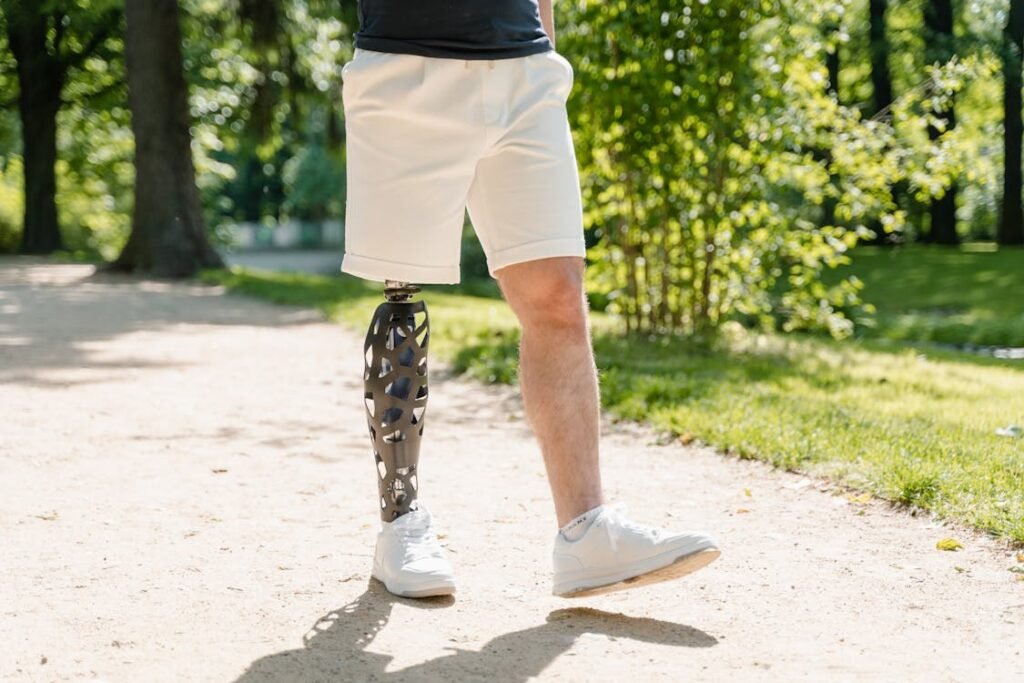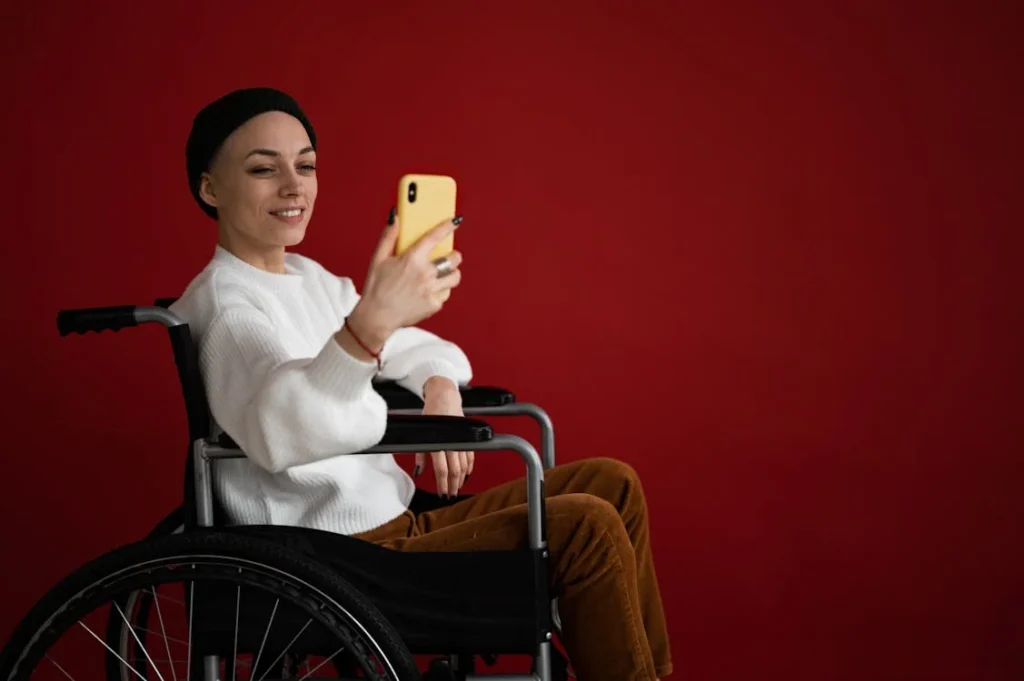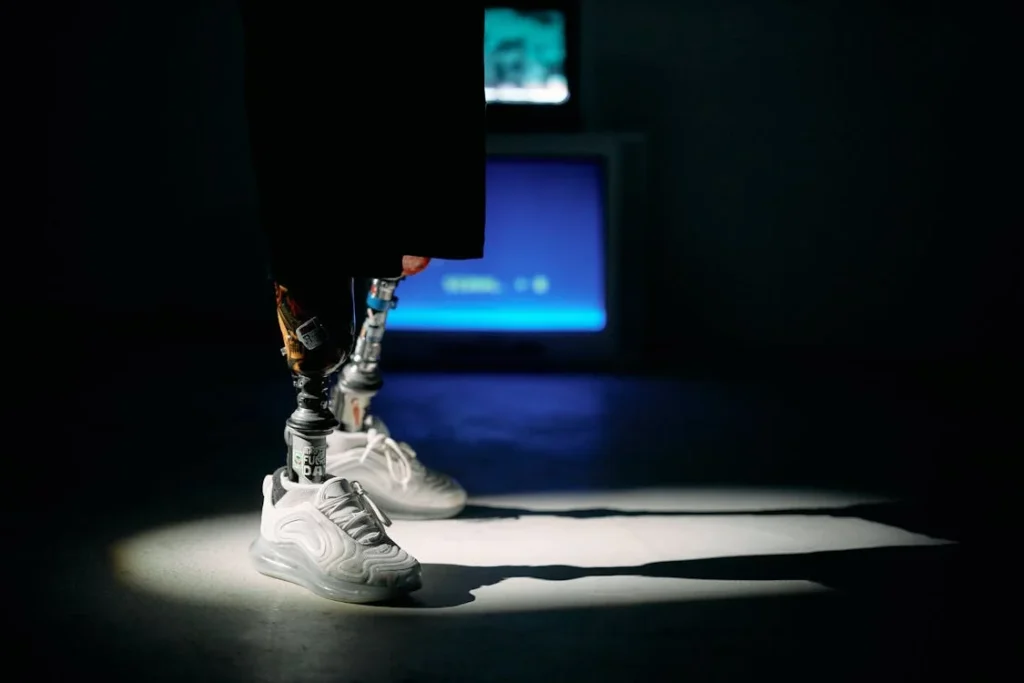Prosthetic limbs change lives by restoring mobility, confidence, and independence. However, they also come with significant costs, which can be a major concern for individuals with partial foot or hemipelvectomy amputations. The price of a prosthetic varies based on the material, customization, and technology used, making it essential to explore financial assistance options.
Understanding insurance policies, government schemes, and other financial aid programs can help ease the burden of these costs. Many people are unaware of the support available to them, leading to unnecessary financial strain. By navigating the right channels, users can access high-quality prosthetics without compromising their financial stability.

Understanding Insurance Coverage for Prosthetics
For many individuals with a partial foot or hemipelvectomy amputation, insurance plays a key role in making prosthetic care affordable.
However, navigating insurance policies can be overwhelming due to varying coverage terms, eligibility criteria, and claim procedures.
Knowing what to expect and how to advocate for yourself can make a significant difference in securing financial support.
How Insurance Covers Prosthetic Devices
Most health insurance policies provide coverage for prosthetic devices, but the extent of coverage depends on the insurer and the specific plan. Some policies cover a significant portion of the cost, while others may only provide partial reimbursement.
In many cases, insurers classify prosthetics as durable medical equipment, meaning they fall under different coverage rules than standard medical treatments.
One of the first steps in understanding insurance benefits is reviewing the policy document or speaking directly with the insurance provider. The key details to look for include whether the prosthetic is fully or partially covered, the number of replacements allowed within a specific timeframe, and any additional costs that might fall on the user, such as co-pays or deductibles.
Many insurers require a detailed prescription from a physician, outlining the medical necessity of the prosthetic. This documentation should include how the prosthetic will improve mobility, prevent further health complications, and enhance overall quality of life.
Without this justification, claims may face delays or denials, making it essential to work closely with your doctor and prosthetist to provide the necessary paperwork.
Common Challenges with Insurance Claims
While insurance coverage can help with prosthetic costs, many users encounter challenges in getting their claims approved. Some insurers impose restrictions on the type of prosthetic covered, often approving only the most basic models.
This can be frustrating for individuals who require advanced prosthetic features for work, sports, or daily activities.
Another common issue is policy limitations on the number of prosthetics covered over a lifetime or within a specific period. For example, if a policy only allows for one prosthetic every five years, but the user’s needs change, they may have to pay out-of-pocket for a replacement.
Denials and delays in claim processing are other hurdles users may face. Insurance companies sometimes reject claims due to missing paperwork, insufficient medical justification, or confusion over coverage terms.
In such cases, appealing the decision by providing additional medical evidence or seeking assistance from a patient advocacy group can improve the chances of approval.
How to Maximize Insurance Benefits
Understanding your policy in detail and communicating effectively with your insurance provider can help maximize coverage. Keeping records of all medical reports, prescriptions, and communication with the insurer ensures that you have the necessary documentation when filing claims.
If a claim is denied, requesting a formal explanation and submitting an appeal with additional supporting documents may lead to a successful resolution.
In some cases, working with a prosthetist who has experience handling insurance claims can be beneficial. They can guide you through the process, recommend prosthetics that fit within your coverage, and help submit the required documentation.
Seeking legal or professional assistance from patient advocacy organizations can also provide valuable support in navigating insurance disputes.

Government Assistance Programs for Prosthetic Users
For those who do not have adequate insurance coverage, government assistance programs can help make prosthetics more affordable. Many countries, including India, offer financial aid, subsidies, and prosthetic support programs through public healthcare initiatives.
These programs aim to ensure that individuals with limb loss have access to essential mobility aids without facing extreme financial hardship.
Government Healthcare Schemes for Prosthetics
In India, several government programs provide financial support for prosthetic users. The Ayushman Bharat Pradhan Mantri Jan Arogya Yojana (PMJAY) is one of the largest healthcare initiatives, offering financial coverage for medical treatments, including prosthetic devices, to eligible individuals.
This scheme is designed to help low-income families receive necessary healthcare services without excessive out-of-pocket expenses.
The Assistance to Disabled Persons for Purchase/Fitting of Aids and Appliances (ADIP) Scheme is another government initiative aimed at providing free or subsidized prosthetics to individuals with disabilities. Under this program, eligible individuals can receive financial aid for prosthetic devices, mobility aids, and rehabilitation services.
The scheme is particularly beneficial for those from economically weaker backgrounds who may not have access to private healthcare funding.
State governments also run disability welfare programs that provide financial assistance for prosthetics. The level of support varies by state, with some offering partial reimbursement and others providing fully funded prosthetic devices.
Checking with local government offices or disability welfare departments can provide clarity on the available assistance options.
How to Apply for Government Prosthetic Support
Applying for government prosthetic support requires proper documentation and adherence to eligibility criteria. Most programs require applicants to submit proof of disability, income certificates, and medical recommendations.
These documents help verify the need for a prosthetic and determine whether the applicant qualifies for financial aid.
The first step in applying for assistance is to visit the designated government office or authorized medical center. Many public hospitals and rehabilitation centers have tie-ups with government programs and can guide applicants through the process.
Medical professionals at these centers evaluate the patient’s condition and issue the necessary prescriptions and reports.
Once the application is submitted, processing times vary depending on the specific program. Some schemes provide prosthetic devices directly through government-approved suppliers, while others offer reimbursement for prosthetics purchased through authorized vendors.
Keeping track of application status and following up with the relevant authorities ensures that the process moves forward smoothly.
Challenges in Accessing Government Assistance
While government programs provide crucial financial support, there are challenges in accessing these benefits. Limited awareness about available schemes means that many prosthetic users do not take advantage of the assistance they are entitled to.
Outreach and awareness campaigns by hospitals, NGOs, and prosthetic manufacturers can help bridge this gap and connect eligible individuals with the right resources.
Delays in processing applications and bureaucratic hurdles can also slow down access to prosthetics. Many applicants face long waiting periods before receiving approval, which can be frustrating, especially for those who need an immediate prosthetic replacement.
Staying persistent and seeking guidance from rehabilitation centers, social workers, or disability rights organizations can help navigate these challenges.
Despite these obstacles, government assistance programs remain an essential resource for prosthetic users who need financial support. With proper guidance and persistence, individuals can access the prosthetics they need to regain mobility and improve their quality of life.

Alternative Financial Assistance for Prosthetic Users
For individuals who do not qualify for government programs or have insufficient insurance coverage, alternative financial assistance options can help cover the cost of prosthetic devices.
Various charitable organizations, non-profits, crowdfunding platforms, and corporate social responsibility (CSR) initiatives provide funding or subsidized prosthetics to those in need. Exploring these options can make a significant difference in affordability and accessibility.
Support from Non-Profit Organizations and Charities
Several non-profit organizations specialize in assisting individuals who need prosthetic devices. These organizations work with donors, prosthetic manufacturers, and rehabilitation centers to provide financial aid or directly supply prosthetic limbs at little to no cost.
Some of these groups operate on a national level, while others focus on specific regions or communities.
Many charities also organize prosthetic camps where individuals can receive free evaluations, fittings, and even customized prosthetics. These events are often held in partnership with medical institutions and government agencies to reach a larger number of beneficiaries.
Staying informed about upcoming prosthetic camps through hospitals, disability centers, and online platforms can help individuals access these services.
Certain international charities extend their support to prosthetic users in India as part of their global initiatives. Partnering with these organizations can provide access to high-quality prosthetics and rehabilitation services without financial strain.
Crowdfunding for Prosthetic Expenses
With the rise of online fundraising platforms, crowdfunding has become a popular method for individuals to raise money for prosthetic expenses. Platforms allow users to create campaigns explaining their medical needs, share their stories, and receive contributions from family, friends, and even strangers.
Many successful crowdfunding campaigns come from communities rallying around individuals in need. By sharing their campaign on social media, engaging with local organizations, and raising awareness about their situation, individuals can significantly increase their chances of meeting their funding goals.
The key to a successful crowdfunding effort is transparency. Clearly outlining the cost of the prosthetic, sharing medical documentation, and updating donors on progress builds trust and encourages contributions. Many people are willing to support a cause when they understand the direct impact of their donation.
Employer and Workplace Support
For individuals who are employed, some workplaces offer financial assistance for medical equipment, including prosthetic devices. Companies that prioritize employee well-being may have policies in place to provide medical allowances, reimbursements, or direct funding for necessary prosthetics.
In cases where a workplace injury led to amputation, workers’ compensation benefits may cover prosthetic costs. Employees should check with their human resources department to explore options available under their company’s health and disability benefits. Some organizations also have CSR initiatives that fund medical needs for employees and their families.
Many individuals have successfully negotiated financial support from their employers, especially when the prosthetic is necessary for them to continue performing their job. Open discussions with management, supported by medical documentation, can sometimes result in flexible payment plans, special accommodations, or direct funding assistance.
Loans and Payment Plans
For those who do not have access to grants or employer support, taking out a medical loan or enrolling in a payment plan can help manage the cost of a prosthetic. Some prosthetic providers offer financing options that allow individuals to pay in installments rather than bearing the full cost upfront.
Healthcare-focused financial institutions and banks also provide loans specifically designed for medical expenses. These loans come with different interest rates and repayment terms, so it’s important to compare options and choose the most affordable plan.
While loans should be considered carefully, they can provide an immediate solution for those in urgent need of a prosthetic.

The True Cost of Prosthetics: Understanding Long-Term Expenses
While many people focus on the initial cost of getting a prosthetic, it’s equally important to consider the long-term financial commitment. Prosthetics are not a one-time purchase; they require ongoing maintenance, occasional replacements, and adjustments to ensure comfort and functionality.
Understanding these long-term expenses helps users plan their finances effectively and avoid unexpected costs.
Replacement and Lifespan of Prosthetics
The lifespan of a prosthetic depends on the material, usage, and daily activities of the user. A high-quality carbon fiber partial foot prosthetic may last anywhere from three to five years, while a silicone prosthetic may need to be replaced sooner due to wear and tear.
For hemipelvectomy prosthetics, durability is even more critical, as they bear the weight of the entire body.
Children and young adults may require more frequent replacements since their bodies grow and change over time. Athletes or highly active individuals may also wear out their prosthetics faster, requiring more regular updates.
Planning for these replacements in advance can help users avoid financial strain when the time comes for an upgrade.
Repair and Maintenance Costs
Regular maintenance is essential for keeping a prosthetic comfortable and functional. Over time, minor adjustments may be needed to accommodate changes in body shape, prevent discomfort, or fix minor wear and tear.
Small issues, such as loose fittings or broken straps, can often be repaired at minimal cost, but more significant damage may require professional servicing.
Some prosthetic providers offer maintenance packages or service agreements that cover routine adjustments. These agreements can save money in the long run by preventing costly repairs through regular check-ups.
Users should ask their prosthetist about maintenance costs and whether their provider offers service plans.
Additional Costs for Accessories and Comfort
Prosthetic users often require accessories to enhance their comfort and mobility. Liners, padding, and special footwear are common add-ons that help improve the prosthetic experience.
While these accessories may seem like small expenses, they can add up over time.
For partial foot prosthetics, customized shoes or insoles may be necessary for proper balance and comfort. For hemipelvectomy prosthetic users, special seating cushions, mobility aids, and supportive belts can help reduce strain on the body.
Understanding these additional costs in advance allows users to budget for them rather than being caught off guard.
Health and Rehabilitation Expenses
Beyond the prosthetic itself, rehabilitation and medical follow-ups are an essential part of long-term care. Physiotherapy helps users adapt to their prosthetic and improve mobility, while regular check-ups ensure that the prosthetic remains properly fitted.
Some individuals may also require pain management treatments or additional medical interventions over time.
For those with limited insurance coverage, planning for these medical expenses is important. Some rehabilitation centers offer sliding-scale fees or financial aid for therapy sessions, making it easier to access the necessary support.
Seeking out affordable physiotherapy options and incorporating rehabilitation costs into long-term budgeting helps ensure continued mobility without financial stress.

How to Plan Financially for a Prosthetic Device
Since prosthetics come with both immediate and long-term expenses, planning ahead is crucial. Many individuals struggle with the cost of acquiring and maintaining a prosthetic, but with proper financial strategies, it is possible to manage these expenses without undue stress.
Budgeting, exploring funding sources, and making informed decisions about prosthetic care can make a significant difference in affordability.
Setting a Realistic Budget
Understanding the full cost of a prosthetic—including the initial purchase, maintenance, replacements, and accessories—helps in setting a realistic budget. Before selecting a prosthetic, individuals should research the price range of different models and the expected lifespan of each option.
Consulting with a prosthetist can provide a clearer picture of total costs and help users choose a device that fits both their needs and financial situation.
When budgeting, it is important to include additional expenses such as physiotherapy, doctor’s visits, and any required modifications to the home or workplace. Factoring in these costs ensures that there are no unexpected financial surprises after receiving the prosthetic.
Exploring All Available Financial Resources
Instead of relying solely on personal savings, amputees can explore multiple financial aid options to reduce the burden of out-of-pocket expenses. Insurance coverage, government assistance programs, and charitable organizations can provide substantial support.
Many prosthetic users find that combining several funding sources helps cover both the initial cost and ongoing care.
Crowdfunding has also become a valuable resource for individuals facing high medical expenses. By sharing their story on social media and engaging with supportive communities, many users have successfully raised funds for their prosthetics through online platforms.
Seeking help from workplace disability programs, veterans’ benefits (if applicable), or special grants can further ease financial concerns.
Choosing the Right Prosthetic to Balance Cost and Functionality
The most expensive prosthetic is not always the best choice for every user. Some high-tech options may include advanced features that are unnecessary for certain lifestyles.
For example, an individual who primarily needs a prosthetic for everyday walking may not require the same model as an athlete or a highly active person.
Understanding personal mobility needs and discussing them with a prosthetist can help in selecting a device that provides the best balance between affordability and functionality.
While durability is important, it is also worth considering whether a slightly more affordable option can provide similar benefits with proper care and maintenance.
Planning for Future Upgrades and Replacements
A prosthetic is not a one-time purchase. Users should plan ahead for when they will need a replacement, considering factors such as insurance limitations, changes in body shape, and wear and tear over time.
Saving a small amount regularly can help build a fund for future prosthetic needs, reducing financial pressure when the time comes for an upgrade.
Some individuals choose to invest in a backup or secondary prosthetic, especially if they rely on their device for work or daily mobility. Having an alternative prosthetic available can be helpful in case of repairs or unexpected delays in acquiring a new one.
By taking a proactive approach to financial planning, prosthetic users can ensure that they receive the best possible care without compromising their financial stability.
Careful budgeting, exploring funding options, and selecting the right prosthetic all contribute to a smoother and more affordable experience.

The Importance of Advocacy and Awareness for Prosthetic Funding
While financial assistance options exist, many amputees struggle to access them due to a lack of awareness, complicated application processes, or restrictive policies. Advocacy efforts play a crucial role in improving access to funding, ensuring that prosthetic users receive the support they need to regain mobility and independence.
By raising awareness, engaging with policymakers, and working with advocacy organizations, individuals can push for better funding policies and increased accessibility.
Raising Awareness About Prosthetic Costs and Funding Gaps
One of the biggest challenges prosthetic users face is the financial burden associated with obtaining and maintaining a prosthetic. Many people, including policymakers and healthcare providers, underestimate how expensive prosthetics can be.
Public awareness campaigns that highlight these costs can help drive change, encouraging governments and insurance providers to expand coverage and reduce out-of-pocket expenses.
Advocacy groups and prosthetic users themselves play a vital role in educating the public about the need for better financial support. Sharing real-life stories, participating in disability awareness events, and engaging with media outlets can help bring attention to the challenges faced by those who rely on prosthetics.
The more awareness there is, the greater the pressure on policymakers to implement better funding options.
Engaging with Policymakers for Better Coverage
Government policies directly impact the level of financial assistance available for prosthetic users. Advocates can work with lawmakers to push for improved healthcare policies that expand prosthetic coverage, simplify reimbursement procedures, and increase funding for assistive devices.
Prosthetic users and advocacy groups can influence policy by meeting with legislators, submitting petitions, and participating in public hearings. Providing clear evidence of the financial barriers faced by amputees and demonstrating how improved funding policies can enhance quality of life can lead to meaningful change.
Many countries have disability rights organizations that work directly with governments to improve access to prosthetic care. Joining these organizations or supporting their initiatives can amplify the voices of prosthetic users and increase the likelihood of policy reforms.
Strengthening Support Networks for Prosthetic Users
Support networks are critical in ensuring that prosthetic users receive the financial and emotional assistance they need. Disability advocacy groups, amputee support organizations, and medical professionals all play a role in guiding individuals through the financial aid process.
Many advocacy organizations offer workshops and informational sessions to educate prosthetic users about funding options, insurance claims, and government assistance programs. These resources can be invaluable in helping individuals navigate complex application processes and secure the financial support they need.
Connecting with other prosthetic users through support groups or online communities can also provide valuable insights and recommendations. Many individuals have successfully navigated financial challenges and can offer advice on the best approaches for securing funding.
Shared experiences help create a sense of empowerment, ensuring that no one has to go through the process alone.
Encouraging Corporate and Non-Profit Partnerships
Businesses and non-profit organizations can play a role in expanding access to prosthetic funding. Many companies have corporate social responsibility (CSR) programs that support healthcare initiatives, including prosthetic care for underprivileged individuals.
Partnering with such organizations can help provide funding, prosthetic donations, and rehabilitation support to those in need.
Non-profit organizations often work with medical institutions and prosthetic manufacturers to provide subsidized prosthetic devices. Encouraging partnerships between healthcare providers, charities, and businesses can create more opportunities for amputees to receive the financial assistance they need.
Advocacy efforts have the power to transform the financial landscape for prosthetic users. By raising awareness, influencing policies, strengthening support networks, and building partnerships, individuals and organizations can work together to ensure that high-quality prosthetic care is accessible to all.
Conclusion
The cost of prosthetics can be a significant challenge, but with the right financial strategies, support systems, and advocacy, individuals with partial foot and hemipelvectomy amputations can access the care they need. Insurance coverage, government assistance programs, charitable organizations, and crowdfunding all offer valuable financial relief. By exploring multiple funding options, prosthetic users can reduce out-of-pocket expenses and ensure they receive a device that fits their needs.
Long-term financial planning is just as important as securing initial funding. Budgeting for maintenance, replacements, and rehabilitation helps avoid unexpected costs. Understanding insurance policies, staying informed about government schemes, and seeking guidance from advocacy groups can make the funding process smoother.
Beyond financial support, advocacy plays a key role in improving prosthetic accessibility. Raising awareness, engaging with policymakers, and strengthening support networks can help push for better coverage and affordability. No one should have to compromise on mobility due to financial constraints.
At Robobionics, we are committed to making prosthetic solutions more accessible. If you or a loved one needs guidance on prosthetic options and financial support, reach out to us today to explore solutions that fit your lifestyle and budget.



